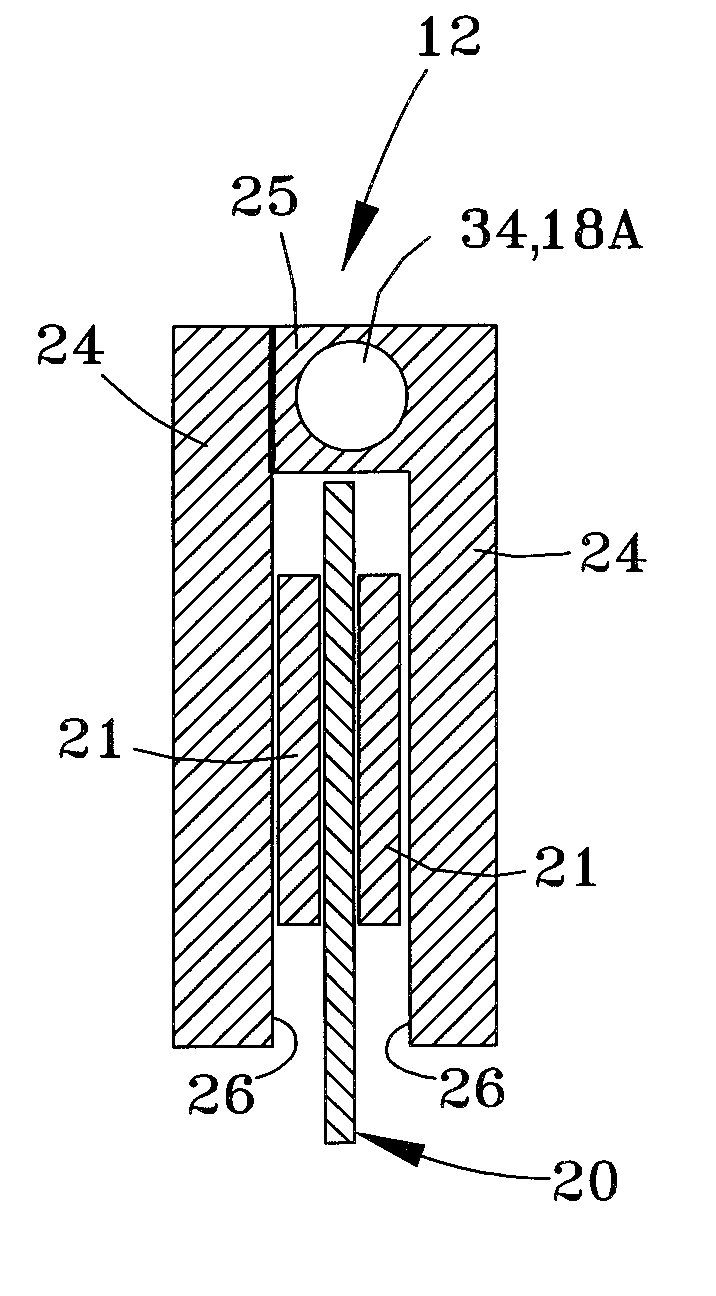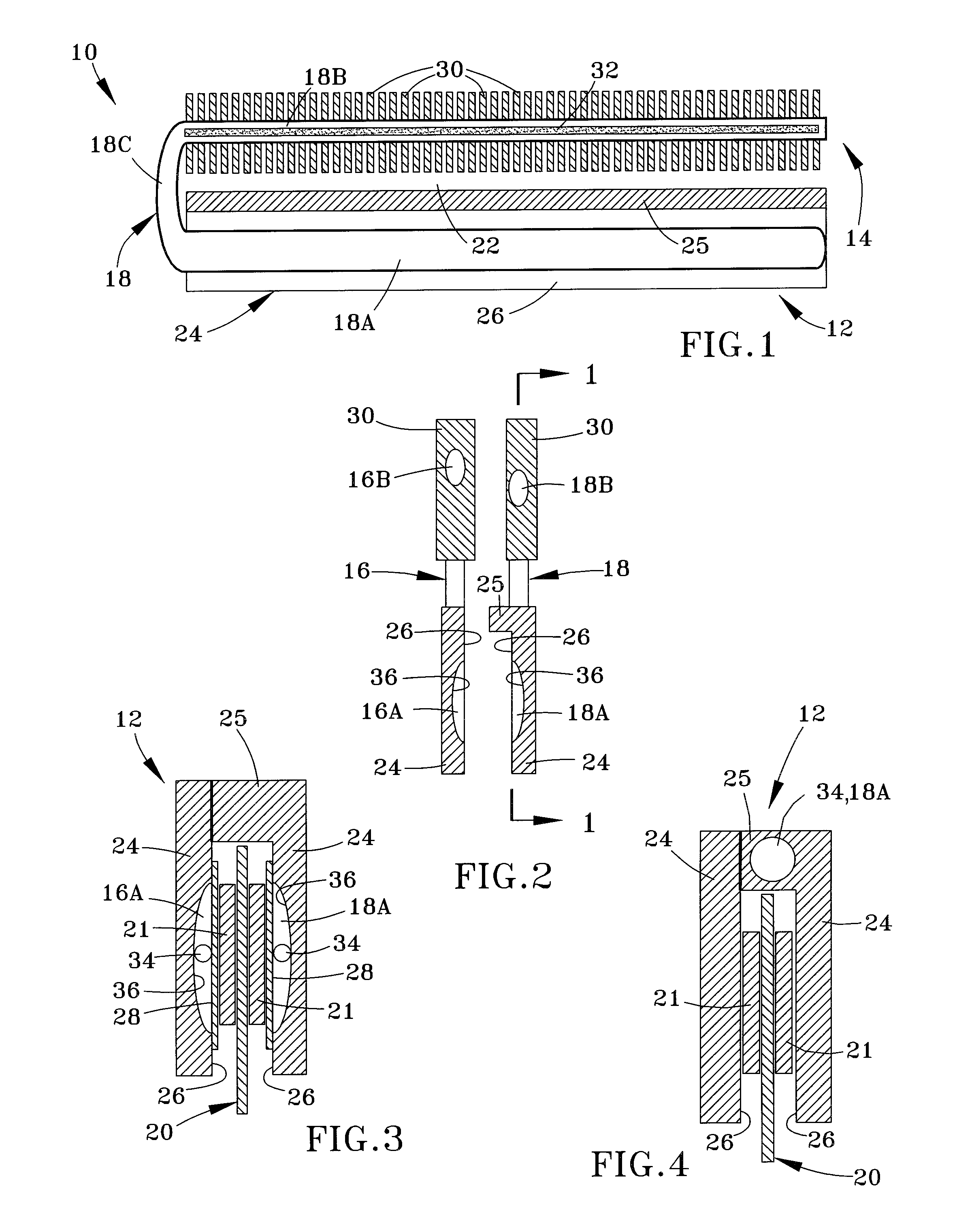Method and apparatus for cooling computer memory
a computer memory and cooling technology, applied in the direction of insulated conductors, cables, semiconductor/solid-state device details, etc., can solve the problems of increasing clock frequencies, power consumption and heat dissipation of system memory, and power consumption of system memory that is far beyond the level found in legacy memory solutions, etc., to achieve the effect of reducing laminar flow, increasing surface area, and creating turbulen
- Summary
- Abstract
- Description
- Claims
- Application Information
AI Technical Summary
Benefits of technology
Problems solved by technology
Method used
Image
Examples
Embodiment Construction
[0019]The present invention provides a thermal management solution that utilizes at least one heatpipe for cooling modules of a computer system memory. The heatpipe is directly attached to a primary heat spreader that preferably is in direct thermal contact with memory chips on a memory module to absorb heat from the chips. The heatpipe is configured to make close thermal contact with the primary heat spreader, and contains water in a partial vacuum to lower the boiling point of the water to approximately or below the maximum operating temperature identified for at least one of the memory chips, for example, based on a maximum junction temperature for the memory chips that if exceeded would slow down signal propagation along the interconnect of the memory die, thereby reducing the maximum attainable frequency of the memory and potentially increasing the error rate. Alternatively, a different coolant could be chosen whose boiling temperature is approximately the highest operating tem...
PUM
 Login to View More
Login to View More Abstract
Description
Claims
Application Information
 Login to View More
Login to View More - R&D
- Intellectual Property
- Life Sciences
- Materials
- Tech Scout
- Unparalleled Data Quality
- Higher Quality Content
- 60% Fewer Hallucinations
Browse by: Latest US Patents, China's latest patents, Technical Efficacy Thesaurus, Application Domain, Technology Topic, Popular Technical Reports.
© 2025 PatSnap. All rights reserved.Legal|Privacy policy|Modern Slavery Act Transparency Statement|Sitemap|About US| Contact US: help@patsnap.com


